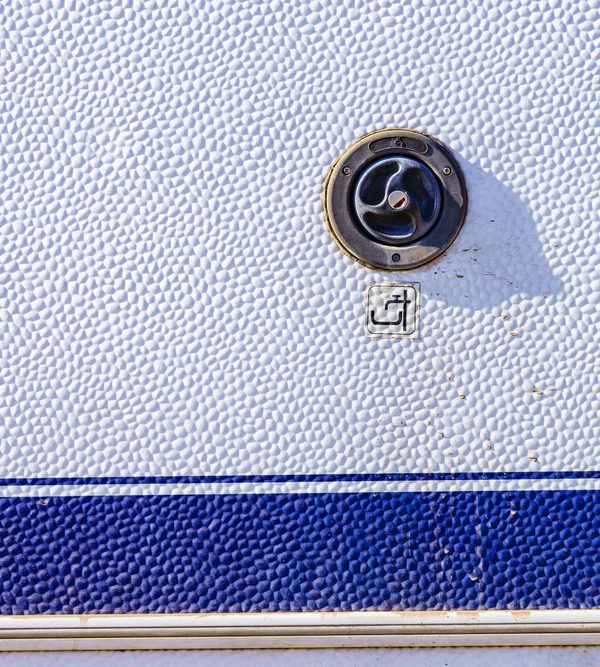New to maintaining RVs? Chances are you’ve never blown out water lines when winterizing your home or even your car. RVs are a bit different in their need for winterization. They run a higher risk of freezing with water inside, which is never a good thing.
So we are on the question of how you blow out your RV water lines. How much air pressure is necessary? How much is too much?

You’ll want from 30 pounds per square inch all the way up to 50 pounds per square inch. The range is fairly small, but necessary to keep your plumbing intact while completing the task effectively.
Why 30 pounds per square inch to 50 pounds per square inch?
RV water lines are a bit different from your home water lines. Most of the times, your home water lines use copper (or if they are really old, lead) which is quite durable. RV’s tend to use PEX plastic tubing, which is effective for a smaller place, and cheaper to construct.
PEX plastic tubing is less durable, though generally works quite well for RVs. While a copper pipe might be able to take a higher amount of pressure, a PEX plastic tube can allow about 50 PSI of air to run through it without the potential for causing more damage than helping.
30-50 is also enough to move water
The PSI amount suggested for blowing out water lines is also enough to push remaining water around and loosen things up when winterizing.
What risks do I have when using too much pressure?
PEX tubes use seals that allow the tubes to connect across multiple rooms in your RV. Using too much pressure can cause premature wear on the seals and result in leaks further down the road. While cleaning up a leak is fairly easy, the water has the potential to damage furniture, electronics, and other things that get caught up in it’s path.
How do I use the compressor for 30-50 PSI?
One common misconception about compressors is that you need a big compressor for a big RV. What’s more necessary for an RV water line is a moderate amount of pressure for a few minutes. A lower capacity air compressor of 2 gallons isn’t a bad thing – the larger downside to a smaller air compressor is that it will take longer to fill the entire RV with air, because they are generally lower powered too. In the context of not damaging the RV, this shouldn’t be a problem.

The most effective water line blowing routine involves setting the compressor for less than 50 PSI and letting it sit for at least a few minutes while the water lines fill with air.
Using a smaller compressor that isn’t capable of significantly more than 50 PSI also helps. You might want to consult with your manual in regards to exactly how to set your PSI to a limit before starting it and plugging in to your water lines.
Check your RV manual
We’ve suggested a range of pounds per square inches to blow the water of your RV lines. We also strongly suggest consulting the manual for your RV to make sure that you are using the right amount for you.
Why? Besides having a small amount of water draining after you blow them out, it’s difficult to tell if the process actually worked. If you used too little air pressure, you risk not actually moving any air and moving on without a fully winterized vehicle.
If you use too much, you risk blowing some seals and having a nasty water surprise when you were trying to relax.
The manual will tell you exactly how much air is necessary based on your actual plumbing setup.
Keep an eye on the air compressor
Air compressors can do some weird things, including losing the ability to regulate the air pressure. It’s ok to have unusually high air pressure while using a drill, but not so much when blowing out water pipes for an RV. You’ll want to be attentive to a compressor, especially an older or cheaper one, to make sure you are getting a consistent flow of air that doesn’t cause damage.
Do I use different amounts depending on the line?

You’ll want to use the same amount of pressure per line unless specified in the manual. The manual is not likely to request a different amount of pressure per hot or cold line.
Should I do anything else besides blowing out the air lines?
Yes, we recommend adding RV antifreeze to your water lines. It’s safe to drink when diluted by a tank of water and can be added again.
As we mentioned earlier, it’s important to know that there is almost no way to know if you have additional water in your lines. Antifreeze gives you a much better chance at keeping your pipes from freezing at minimal expense. Doing both a blowout and antifreeze will help you rest assured you won’t have future plumbing issues.
Do I open the line and put the compressor hose in?
No, you should get a blowout plug for your RV water lines. These plugs allow you to connect the air hose to the line with a screw-in plug. This keeps the hose stable and prevents you from actually putting the hose directly into the inlet. These are cheap at hardware store and should be stored properly – they are small and easily lost.
Conclusion
With a little bit of knowledge and precaution, making your RV safe for colder temperatures is easy. Our basic suggestions are to use a smaller compressor that has a lower PSI range, and of course to read the manuals for both the compressor and the RV. Your RV might ask for something unexpected, and the process of winterizing will be easier if you know what it asks for.



